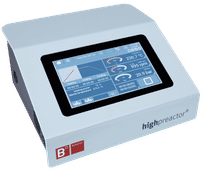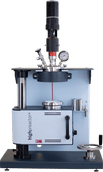Linde makes fighting large smouldering fires safer with liquid carbon-dioxide
Advertisement
The Linde Group announced an innovative process for extinguishing large scale smouldering fires which dramatically reduces danger to fire fighters and damage to stock. This is achieved by injecting liquid carbon dioxide through a specially designed nozzle, sealing off the fire.
Dangerous fires in silos storing organic material, such as wood chips, grain and increasingly raw material for bio fuels are unfortunately frequent events. Extinguishing these fires can be very dangerous and has even resulted in deaths of fire fighters. Smouldering fires often begin when moist organic matter starts to ferment. Fermentation creates heat which can lead to a potentially explosive, smouldering fire.
"Our new carbon dioxide extinguishing process will not only significantly reduce the risk of explosion, increasing safety for fire fighters, but because it is a clean agent any material which is not burned by the fire can remain undamaged, maintaining product value" said Michael Heisel, Project Manager Refining and Process Chemistry, Linde Gases Divison.
With Linde's new process a smouldering fire in a container is sealed off by a blanket of carbon dioxide injected through a proprietary nozzle. As carbon dioxide is heavier than air it sinks to the lowest level once injected into a silo and as the fire continues underneath, the remaining air is consumed, creating a downwards vacuum. Carbon dioxide fills this vacuum and stifles the fire as the injected gas itself does not burn. Additionally, the carbon dioxide efficiently catches sparks from the fire and extinguishes them, further reducing risk of explosion. The method can also be applied from a distance, protecting fire fighters.
Traditional methods of fighting large smouldering fires have until now been limited to the use of water and nitrogen, neither of which has produced optimal results. Water slowly permeates the organic material rendering any unburned stock water damaged. It also introduces more oxygen into the silo increasing the risk of explosion. As nitrogen is lighter than oxygen, it rises to the highest point in the silo, creating an upwards vacuum which can flare up the fire. In addition, highly flammable gas is generated during the smouldering process of organic materials and collects in the head space in the silo. The upward vacuum created by injecting nitrogen can carry dangerous sparks up to the head space resulting in an explosion.
Most read news
Topics
Organizations
Other news from the department research and development
These products might interest you

Get the chemical industry in your inbox
By submitting this form you agree that LUMITOS AG will send you the newsletter(s) selected above by email. Your data will not be passed on to third parties. Your data will be stored and processed in accordance with our data protection regulations. LUMITOS may contact you by email for the purpose of advertising or market and opinion surveys. You can revoke your consent at any time without giving reasons to LUMITOS AG, Ernst-Augustin-Str. 2, 12489 Berlin, Germany or by e-mail at revoke@lumitos.com with effect for the future. In addition, each email contains a link to unsubscribe from the corresponding newsletter.
































































